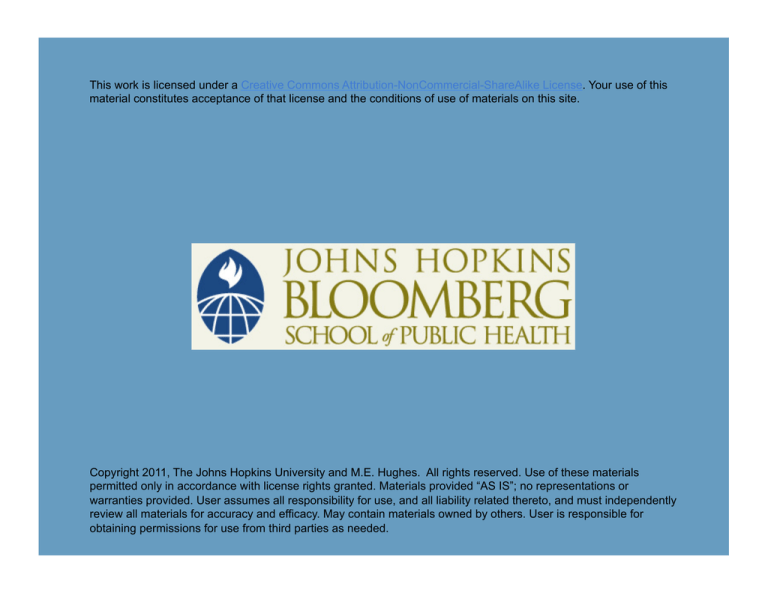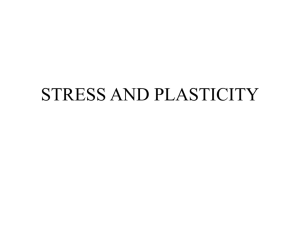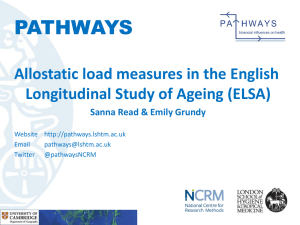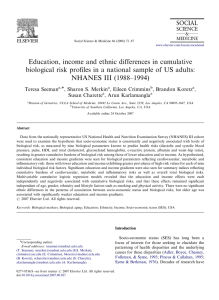
This work is licensed under a Creative Commons Attribution-NonCommercial-ShareAlike License. Your use of this
material constitutes acceptance of that license and the conditions of use of materials on this site.
Copyright 2011, The Johns Hopkins University and M.E. Hughes. All rights reserved. Use of these materials
permitted only in accordance with license rights granted. Materials provided “AS IS”; no representations or
warranties provided. User assumes all responsibility for use, and all liability related thereto, and must independently
review all materials for accuracy and efficacy. May contain materials owned by others. User is responsible for
obtaining permissions for use from third parties as needed.
Section B
Themes Over the Life Course, Part 2
Timing
When things happen in the life course is often as important as
whether they happen at all
- Going back to school doesn’t help people to catch up in
earnings
- Timing of childbirth is consequential in women’s lives
Timing may not refer to age, but to the relationship of the event to
other events
- Having a child prior to finishing education or prior to marriage
- Divorce with and without children
3
Time Patterns
Accumulation of risk (cumulative disadvantage)
Critical and sensitive periods
4
Cross-Level Processes
Stress process
Immunity
Neurodevelopment
5
People’s Life Experiences Get “Under the Skin”
How do people’s life experiences get “under the skin”?
- Major potential pathway is through the stress process
- “Stress” is a rather vague term, used differently by various
disciplines
- Basically, an environmental challenge that threatens the
operating integrity of an organism and thus requires the
organism to adapt in some way (e.g., threat)
- Process of adaptation includes return to original state
6
Stress and the Life Course
Can conceptualize stressors and perceptions of stress in terms of the
life course
- E.g., poverty, divorce, care giving, trauma
- Note temporality (chronic/acute)
- Note that context matters: same event may or may not be a
stressor depending on what else is going on in the person’s life
7
Social Environment and Health
Social environment
Position in social hierarchies
Social connection and networks
Neighborhoods
Life challenges
Sources of stress
Source: C. Seplaki.
Physical and
mental health
8
Social Environment and Health
Social environment
Position in social hierarchies
Social connection and networks
Neighborhoods
Physiological
response
Life challenges
Sources of stress
Source: C. Seplaki.
Physical and
mental health
9
Allostatic Load
Framework from McEwen and Stellar (1993), McEwen (1998)
Systems involved in the stress response include …
- Sympathetic nervous system (SNS)
- Hypothalamic-pituitary-adrenal axis (HPA)
- Immune system
- Cardiovascular and metabolic systems
Homeostasis, allostasis, allostatic load, physiological dysregulation
Repeated or chronic activation of the stress response can have
negative effects on health over time
10
Stress Response and Development of Allostatic Load
Environmental stressors
Major life events
Trauma, abuse
Perceived Stress
Individual differences
Behavioral responses
Physiologic responses
Allostasis
Adaptation
Allostatic load
Adapted from: McEwen, B. S. (1998). Protective and damaging effects of stress mediators. New England Journal of
Medicine, 338, 171–179.
11
Stress Response and Development of Allostatic Load
12
Results on Allostatic Load
Measures of allostatic load have been positively associated
with mortality and cognitive and physical decline (e.g.,
Seeman et al., 1997)
AL measures have also been shown to explain a significant
proportion of the excess mortality risk for those of low SES
(measured by HS education) (Seeman et al., 2004)
- Independent of self-reported disease
- Better than individual biomarkers
Recently, researchers have also examined the role of
immune function in AL
Research continues on the measurement of AL …
13











![[] Bruce McEwen, Elizabeth Norton Lasley, Elizabeth Lasley - The End of Stress As We Know It (2002, National Academies Press)](http://s2.studylib.net/store/data/027334057_1-57eb76751ac7aa351f2175e312ba8c29-300x300.png)